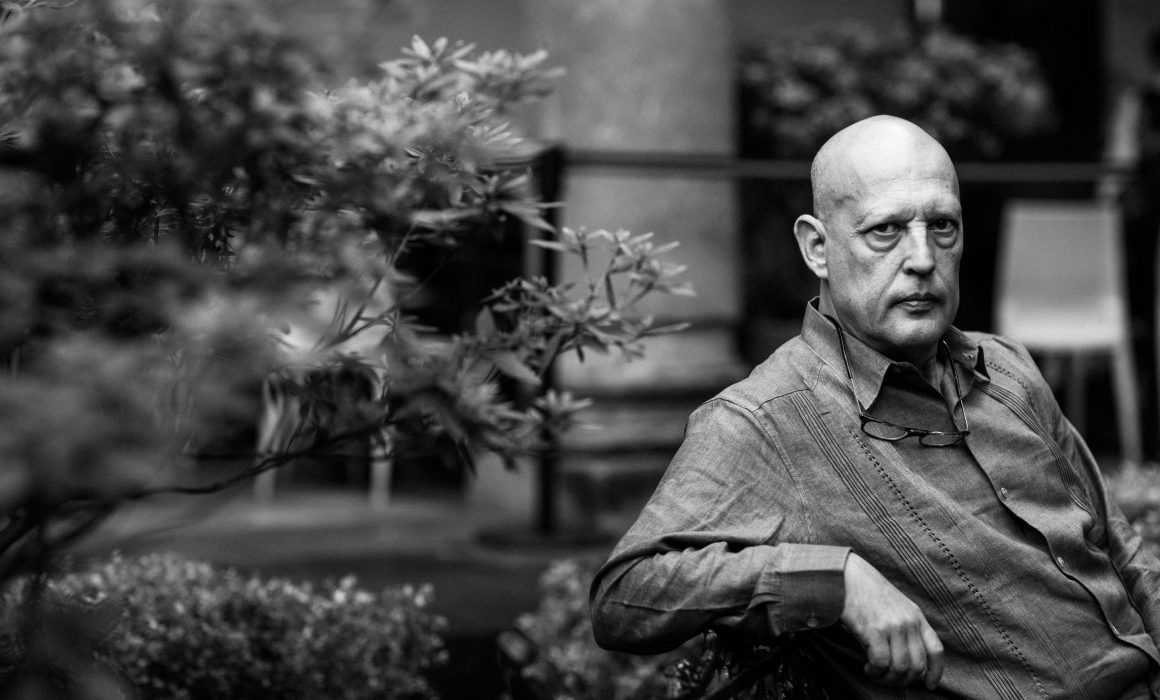FLOATING SOUND GALLERY
Vienna
Javier Álvarez Fuentes

photo: FMM
Javier Álvarez Fuentes (8 May 1956 – 23 May 2023) was a Mexican composer known for compositions that combined a variety of international musical styles and traditions, and that often utilized unusual instruments and new music technologies. Many of his works combine music technology with diverse instruments and influences from around the world. He taught internationally, in the UK and Sweden, and back in Mexico later in his career.
Several of Álvarez's works incorporate elements from Latin American dance genres, such as mambo. They have been performed throughout the world by orchestras such as the Chicago Symphony Orchestra, the London Sinfonietta, the Los Angeles Philharmonic, the Mexico City Philharmonic, and the Orchestre National de France. He composed the music for Guillermo del Toro's 1993 horror film Cronos.
From 1993 to 1999, Álvarez was a Fellow of Mexico's National Endowment for the Arts and Culture. He was a founding member of Sonic Arts Network and served as the artistic director of the Society for the Promotion of New Music in 1993. He was a member of the music faculties, teaching composition and computer music, of the City University London, the Guildhall School of Music and Drama, the Malmö Academy of Music, the Royal College of Music, and the University of Hertfordshire.
After living in England for 25 years, Álvarez returned to Mexico where he served as Dean of the Conservatorio de Las Rosas [es] in Morelia, Michoacán. He then was a founding member of the musical arts department of the Escuela Superior de Artes de Yucatán in 2004, serving as its director from 2018. He resided in Mérida, Yucatán, where he was also active as a freelance composer and project animateur.
Álvarez died in Mérida on 23 May 2023, at age 67. Alejandra Frausto, the federal Secretary of Culture, credited him as a "musician and composer who never stopped creating, proposing and working for his community and for his beloved Mérida".
Mambo à la Braque, 1990, 3’17
Like words made from letters cut out of newspapers, for Mambo à la Braque I used short musical extracts from Caballo Negro, one of the best-known mambos of the composer Dámaso Perez Prado to whom this piece pays homage. I put these segments together into a sort of sound mosaic using other sounds to glue them together. My goal was to create a kind of cubist music, or in other words, a mambo of my invention made from cutouts of mambos.
Cactus geometries, 2002, 18’19
Cereus Hexagonus, 5:43
Lophphora Williamsii, 5:32
Parodia Penicillata, 1:44
Agave Fourcroydes Lemaire, 1:38
Dorcoba Aureispina, 4:45
Commissioned by the GRM.
In this work I chose a few of my favourite cacti as musical metaphors for five possible sonic topologies. During the composition of the work, their capricious and voluptuous geometry served me as a model to invent virtual spaces, fluxes, impacts, variable symmetries, landscapes, whirlwinds and sonic trajectories, whilst specifics regarding their properties provided the context for more anecdotal images.
Offrande, 2020, 18’
Mains aux oiseaux (Hands to the birds), 4:05 Liquid Metal (Liquid metal), 5:56 Varitas (sticks), 4:52 Delfín Herido (Wounded dolphin), 3:31 Offrande is a piece in four short tableaux which have in common sound materials coming only from two series of tenor and bass steel-drums, but which differ in the way of interfering with the electroacoustic elements. Using different techniques to produce an ideal structural scheme for establishing a relationship between "live" and electroacoustic sounds.
Mejor morir en la selva (Better to die in the jungle), 2017, 14'35
When it comes to flying, anything goes. In the space that surrounds us and the sky that covers us, countless particles, objects and living beings wander in flight. In Mediterranean cultures as well as in Mesoamerican and even northern European cultures, everything that flies and hangs in the sky has been a messenger of the gods. To birds, for example, this gives them, symbolically, the unique ability to predict, with their song, presence and flight, promising or disastrous aspects of the future. The traveling bird, symbol of time and angel of the most hidden part of our being, embodies the paradigm of metamorphosis, so greatly supported by the ancient Mediterraneans. For its part, in Mesoamerican cosmology, this paradigm is transformed by incorporating the fleeting flight of the bird to the creeping stealth of the snake in an indivisible duality; In this two-dimensional vision, the transition of men from life to death, from the supraworld to the underworld, converges elliptically.
Better to die in the jungle starts from this metaphorical field and proposes to investigate, through a sound approach, the flight of various flying creatures, real and imagined. Conceived for a spatial environment delimited by 8 diffusion points, the work seeks to motivate in the listener a transversal, poetic and reflective perception of the sound-temporal space that surrounds it and within which, as emblems of its own wealth and future, re-discover the reality of our days. This work is an homage to the migrants that go through Mexico to the US and their struggle to survive.
Better to Die in the Metaphorical Jungle was composed by a co-commission between the CMMAS (Mexican Center for Music and Sound Arts) in Morelia, Michoacán and the GRM (Groupe de Récherches Musicales) in Paris, France.
